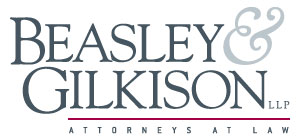By: Benjamin J. Freeman, Attorney—
Muncie, IN—Dealing with a personal injury is never easy. Beyond the injury itself, personal injury sufferers can expect medical bills from the healthcare providers. Many people who suffer a personal injury focus on the possibility of a personal injury settlement. However, this process can take many months and possibly years. Nonetheless, many medical providers won’t wait for the personal injury settlement process to conclude before demanding payment. This dichotomy often results in several common misconceptions about the personal injury process.
Common Misconception: “I’m not at fault. I shouldn’t use my own medical insurance coverage.”
When a people suffer an injury that is the fault of another person, they often feel that they should not bear the cost of their medical treatment even if they will be reimbursed later. Many even refuse to provide a treating doctor or hospital with their medical insurance information. However, this common misconception can have both short term and long term negative financial implications.
What many people do not realize is that medical insurance companies are often reimbursed through the personal injury settlement process. The injured party’s medical insurance company will pay claims in accordance with the medical insurance policy. The medical insurance company will then be reimbursed when the personal injury claim is settled. When a personal injury sufferer refuses to take advantage or their medical insurance coverage, they must bear the entire short term cost of their treatment and may also lose out on contractual benefits medical insurance companies have with healthcare providers.
Most medical insurance companies have contracts with healthcare providers in their network. These contracts allow medical insurance companies to negotiate down the costs of treatment for providers within the network. When you allow the healthcare provider to bill your insurance company, you benefit from these negotiated rates. Depending on the specific medical insurance policy and coverage, a medical insurance company may then pay a portion of the remaining bill. This is all done prior to a patient receiving a statement from the healthcare provider. As an example, a $10,000.00 emergency bill may be automatically reduced to $7,500.00. Then the insurance company may pay $5,000.00 leaving only $2,500.00 to be billed directly to the patient.
Common Misconception: “My auto insurance company can’t help me if I’m not at fault.”
When people think of auto insurance, most are concerned with collision coverage. However, an often overlooked benefit of auto insurance coverage is medical payments coverage. Medical payments coverage is auto insurance coverage allocated specifically to the payment of medical bills resulting from an accident. When a person is involved in an auto accident and is not at fault, they may not even inform their insurance company. Failing to do so may result in lost medical payments coverage that could help with the payment of medical bills. This can provide some financial relief during the personal injury process.
Common Misconception: “I don’t need to pay my medical bills during the settlement process.”
When a person suffers a personal injury that is the fault of another party, the last thing they want to worry about is paying medical bills. However, failing to do so may result in serious damage to a person’s credit which can have lasting financial implications long after the injury is suffered. Sometimes, even if an injured party has medical insurance and takes advantage of medical payments coverage offered by their own auto insurance company, there may still be a balanced owed to the healthcare provider.
Once the medical insurance company has adjusted and paid all or a portion of the bill and any auto insurance medical payments coverage is exhausted, the patient may then contact their healthcare provider directly to make payment arrangements for any remaining balance. Depending on the healthcare provider, this may mean monthly payments until the balance is paid. Some healthcare providers may allow the injured party to pay the balance in full upon the settlement of their personal injury claim. These out of pocket costs can be incorporated into the settlement and eventually recouped by the injured party. Most importantly, making payment arrangements with your healthcare provider insures that the healthcare provider will not make a negative report to a credit bureau.
The personal injury process is never easy and is certainly not fun. Avoiding common financial mistakes during the personal injury process can help the personal injury sufferer avoid additional stress. Though the process may seem overwhelming, Beasley & Gilkison, LLP is experienced in litigating personal injury claims and is here to answer any questions you may have.
About the author: Benjamin J. Freeman is a graduate of Jay County High School, Ohio Northern University, and the University of Dayton School of Law.
About Beasley & Gilkison
We listen, analyze your unique situation, and prepare a course of action that best fits your needs. Contact one of our attorneys to schedule a consultation, or for more information, call 765-289-0661 or visit our Facebook page or website at beasleylaw.com.

Beasley & Gilkison, Muncie’s trusted attorneys for over 120 years.
This article is made available by the lawyer, law firm, or publisher for educational purposes only to give you general information and a general understanding of the law, not to provide specific legal advice. By using this site you understand that there is no attorney client relationship between you and the attorney, law firm, or publisher. The information provided should not be used as a substitute for competent legal advice from a licensed professional attorney in your state.



